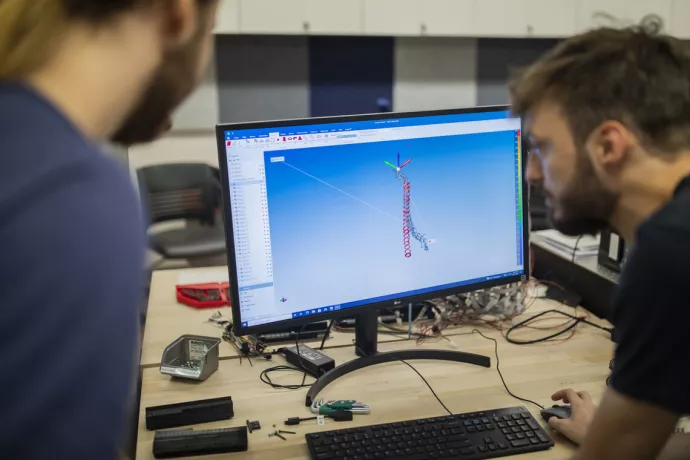
Faculty input needed on the future of digital learning at UofT Mississauga
With all sorts of modern, high-tech tools at our fingertips that enhance online-learning experiences, coupled with a pandemic that has necessitated some extreme shifts in course delivery, it is a challenge to determine what exactly are the most effective ways to support departments and instructors with their teaching and stay current within this fast-paced academic framework.
For example, what training might you need to enhance your skills related to online course delivery? What technological tools would be most useful to effectively deliver your existing courses? What is your overall attitude towards digital learning?

He needs UTM faculty members’ input and instructional expertise to inform his work.
In a recently launched survey that is supported by the Learning Education Advancement Fund (LEAF), Evans-Tokaryk wants to find out how to best support instructors in this evolving digital-learning environment and assess how teaching has changed over the past few years.
“We have already conducted interviews with members of each of UTM’s Departments and the Library to gather some of this information,” says Evans-Tokaryk.
“This survey is the next step of the study to provide faculty members with an opportunity to share their thoughts and experiences and for our team to identify their technological teaching needs.”
Evans-Tokaryk is interested in UTM faculty members’ previous experiences with digital learning as well as the technological tools they have increasingly incorporated into classes to help support the online learning experience. These technologies have ranged from podcasts and pre-recorded lectures that instructors post to UofT’s online learning and teaching Quercus platform, so students can listen or view on their own time, to meeting students virtually.
“Online office hours are an example of a more common and simple online tool,” says Evans-Tokaryk.
“A lot of faculty members have offered it, and students have responded extraordinarily well to this as an option, because so often office hours require, in some cases, a long commute to and from campus, and then a wait for a 10-minute slot. This is so much more time consuming as opposed to just logging in and being able to have the exact same conversation from your respective locations online.”
The survey is divided into five parts examining the following considerations: participants’ teaching background; changes in teaching practice and perspectives; teaching effectiveness; professional development and supports; and instructor demographics.
The UTM project is overseen by a local Steering Committee with representatives from the Office of the Vice Principal, Academic and Dean, the UTM Library, the Institute for the Study of University Pedagogy, and the Robert Gillespie Academic Skills Centre, as well as input from UTM’s Information & Instructional Technology Services and the Equity, Diversity & Inclusion Office. This initiative is also part of a larger tri-campus study managed and funded by the Office of the Vice-Provost, Innovations in Undergraduate Education (VPIUE).
Faculty members have received a link via email to participate in the 20-minute survey and the research team is hopeful for a robust response rate. (If you did not receive the link, please contact Carla DeMarco.) Participants should submit responses by July 15, 2022.
“Our goal is to identify faculty members’ capacity for digitally enabled teaching strategies and opportunities where the University can provide support and training with regard to digital learning,” says Evans-Tokaryk.
“Ultimately, we will use this information to make recommendations for improvements and investments in structural supports, as well as the professional development and training that instructors require to engage in digital learning and to offer students an enhanced and more meaningful academic experience in ways that align with divisional goals and priorities.”
